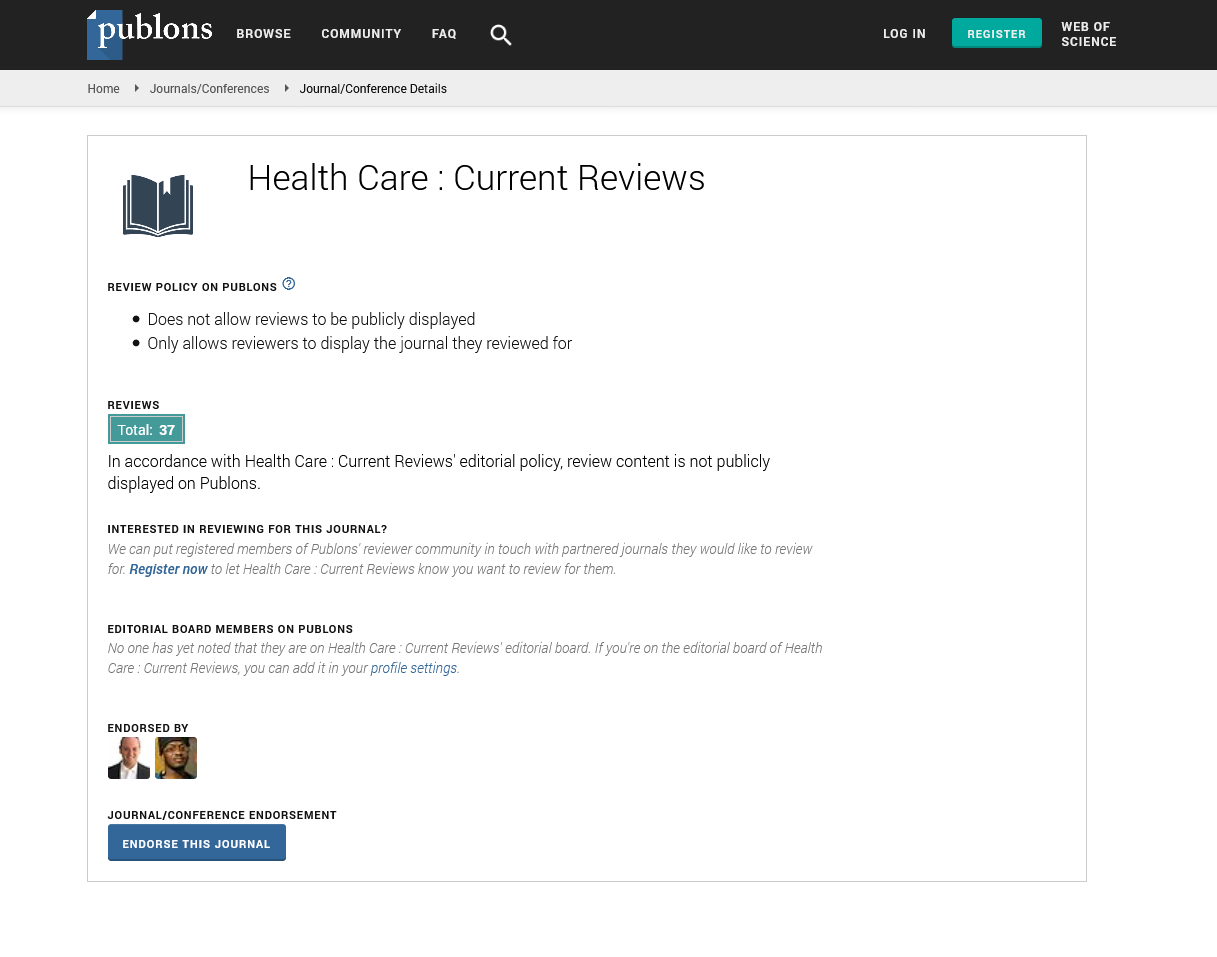Indexed In
- Open J Gate
- Academic Keys
- RefSeek
- Hamdard University
- EBSCO A-Z
- Publons
- Geneva Foundation for Medical Education and Research
- Google Scholar
Useful Links
Share This Page
Journal Flyer

Open Access Journals
- Agri and Aquaculture
- Biochemistry
- Bioinformatics & Systems Biology
- Business & Management
- Chemistry
- Clinical Sciences
- Engineering
- Food & Nutrition
- General Science
- Genetics & Molecular Biology
- Immunology & Microbiology
- Medical Sciences
- Neuroscience & Psychology
- Nursing & Health Care
- Pharmaceutical Sciences
Lifting tuberculosis out of the shadows through active case finding in Swaziland: A community participatory approach
10th Asia Pacific Global Summit on Healthcare
March 12-14, 2018 Singapore
Joyce Sibanda
University of South Africa, Swaziland
Scientific Tracks Abstracts: Health Care Current Reviews
Abstract:
Background & Aim: Tuberculosis remains a major challenge exacerbated by the advert of drug resistant strains. Since the past decade, Swaziland experienced progressive decline of TB case notifications contrary to the World Health Organization estimates. Currently, HIV prevalence is 27% which is highest worldwide, co-infection of TB/HIV is at 70% and mortality rate for drug sensitive and drug resistance is at 14% and 18%, respectively. In 2015, case detection was 59% which denotes 41% missing TB cases. The Swaziland TB program envisaged introduction of active case finding strategy complimenting passive case finding. The principle aim was increasing TB case detection to reduce the infectious pool and negative outcomes. Methodology: Consultative meetings with stakeholders were held to develop community-based strategic framework. In-depth interviews were conducted with region administrators and eight focus group discussions held with the chiefs eliciting their views. Subsequently, sensitization campaigns were conducted in communities. The chiefs identified an active case finder (ACF) for their respective chiefdoms. 369 ACFs visit households to educate, screen for TB, collect sputum samples for bacteriological confirmation and link TB cases for treatment. Presumptive cases failing to expectorate are referred to health facilities. The principle aim is to reduce the infectious pool and negative outcomes. Results: Educating communities, screening and collecting sputum samples increased TB case detection from 59% in 2016 to 84% in 2017. Introducing community intervention was complex and cumbersome as different stakeholders are engaged. TB cases are identified, diagnosed and treated early. Traditional leaders as opinion leaders advocates for ACFs in their spheres of influence through positive dialogue resulting in meaningful participation of the community. Conclusion: ACF increased TB case detection from 59% to 84% in a year. Community involvement cascading to grass-root promotes successful implementation of community-based programs. Engaging community leaders as advocates increases meaningful participation of the community. Planning community-led intervention is cumbersome as different stakeholders have to be engaged for acceptability and ownership. Programmatic decision making can be bureaucratic process and time consuming as processes have to be followed.
Biography :
Joyce Sibanda is presently a PhD student in the University of South Africa. She has expertise in improving the wellbeing of populations in need as Nurse Practitioner. Her vast experience in clinical practice, training institutions and non-governmental organizations including humanitarian organizations has made her to focus on research which has seen her presenting and publishing scientific papers at multiple international conferences. Her interest in research has made her outstanding and open minded on public health issues and thrives to formulate a community-based model to enhance access and utilization of primary health care services by children living in child-headed households in the rural communities.
Email:joyce.sibanda@yahoo.com,
Email:jsibanda2363@gmail.com

